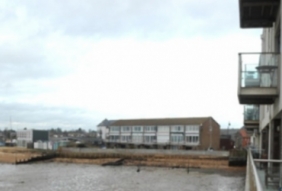
Posted on January 4, 2016
The Brightlingsea Harbour Commission has unveiled plans to dredge out
channels within the harbour after mud has built up on lanes used by
commercial and private vessels.
It has also agreed to carry out dredging of the Waterside Marina on behalf of the receivers who own the development.
The thousands of tonnes of mud and silt will be released gradually into the water on the ebb tide, taking out towards the sea.
However
residents in Fieldgate Dock, which lies to the seaward side of the
Waterside Marina, have questioned why the sediment should be dumped in
their direction.
Peter Coopland, also a former Brightlingsea
harbour master of ten years, said: “They don’t want to do it on the
flood tide as it will do damage around The Hard, but the same is true of
us on the ebb tide.
“But my greatest concern is the destruction
of the eco-system on the rill [a shallow channel in the estuary], a
feeding ground for all the birds including dunlin and heron who catch
small fish and shellfish. If this becomes full of mud – even two inches,
it’s so shallow – the food won’t be able to live.
“It’s a natural harbour, and if you do something to one part of it something else will happen to another bit.”
Fellow
resident Bryan Roberts added his concerns for the town’s Blue Flag
beach and beach huts which he suggested could also see some of the
dredged material on it.
However Steve Chick, harbour master, said
the nature of the estuary meant much of the sediment would help to
rebuild saltmarshes which have been eroded in recent years, protecting a
vital habitat for local wildlife.
He said: “All our studies suggest any siltation will be negligible.
“The
timetable will be carefully planned to minimise disruption to harbour
users, whilst at the same time maximising the potential for rejuvenation
of the saltmarshes.
“Amongst the many issues being taken into
consideration are the seasonal activities of the leisure boaters, the
requirements of commercial oystermen and fishermen and the needs of the
wildlife which rely on the saltmarsh.
“The Colne Estuary and
Brightlingsea Creek are a natural eco-system. Removing sediment from a
balanced system can cause erosion or build-up of sediment because of a
disruption in the balance.”
He added that the work was only going
ahead after extensive consultation with relevant bodies and was backed
by scientific reports, while the effects of the dredging would be
continually monitored to ensure there was no negative impact on the
environment.
The marina dredging will be paid for by the
receivers, while the harbour work is being funded through a mixture of
European and commission funds.
Work on the marina aspect will begin in early 2016, with the other dredging being carried out later in the year.
Roger
Tabor, town resident, broadcaster and chairman of the British
Naturalists’ Association, said he had raised grave concerns about the
scheme as originally put forward, but was now confident the dredging
would help to rebuild salt marshes – which also act as a flood defence
as well as a habitat for wildlife.
He said: “A year ago I was
unbelievably worried, very anxious, about the way things were going, but
because of the work of the harbour commissioners I think it will come
out with something workable. They are to be congratulated.
“If it was dumping it all at the same time it would be disastrous.
“It is about getting the balance right, and it is not easy. Monitoring is key, and no-one wants to get it wrong.”





